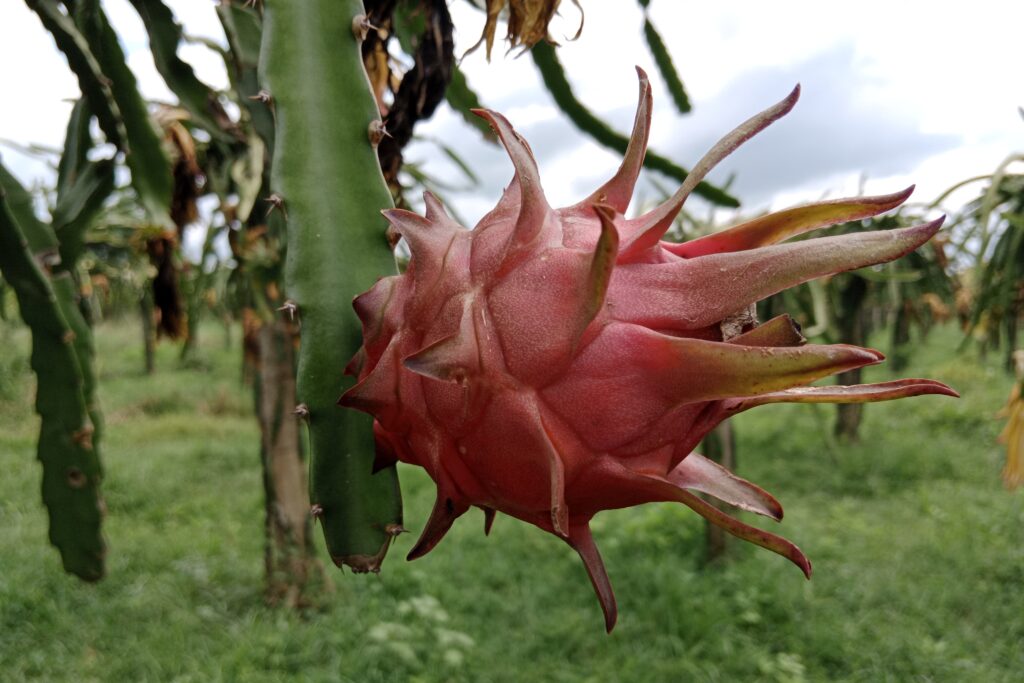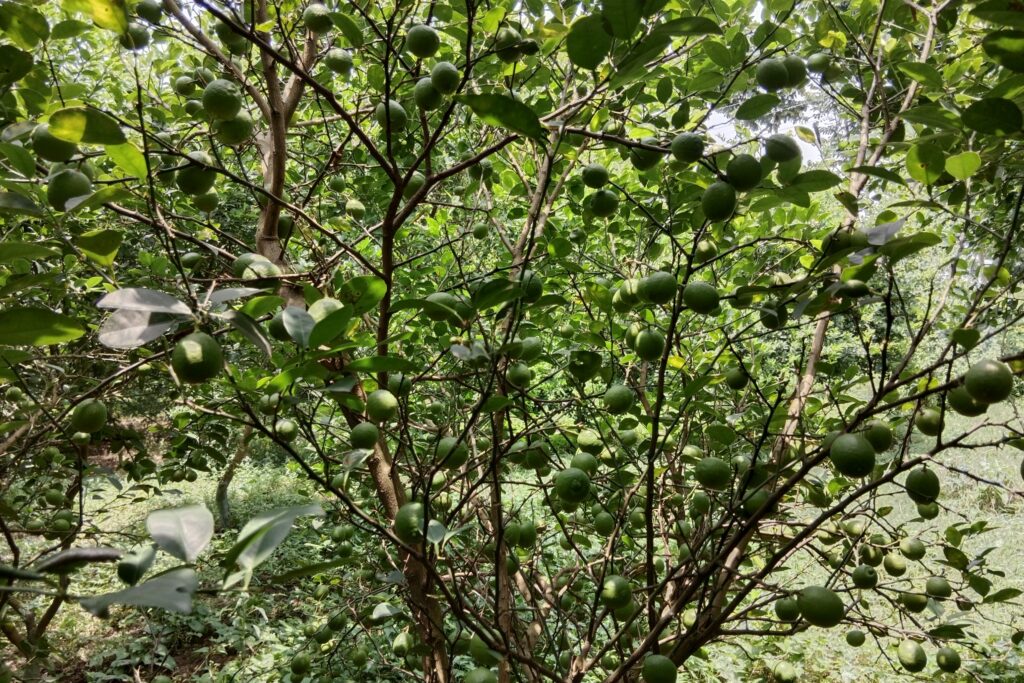Rose Pruning
Roses, known as the garden’s crown jewels, are prized for their timeless beauty and pleasant scent. Pruning them properly is a crucial activity to preserve their health, vigor, and profusion of blooms. Rose Pruning greatly improves the general health, vigor, and longevity of rose plants in addition to making them more aesthetically pleasing.
From a physiological standpoint, pruning triggers a remarkable response in rose plants by stimulating the formation of metabolic sinks—regions that demand and store energy within the plant. Research indicates that pruning influences the movement of carbohydrates, redirecting them to storage areas in the plant’s lower sections. This redistribution plays a key role in supporting the plant’s recovery and growth. Additionally, pruning rejuvenates the plant’s ability to photosynthesize. Older, shaded leaves that previously contributed minimally to photosynthesis are re-exposed to sunlight, leading to increased activity. This boost in photosynthesis provides essential energy-rich assimilates that promote bud development and stimulate new growth.
By recognizing the practical and physiological advantages of pruning, you can enhance your approach to rose care, ensuring your garden remains a flourishing haven of beauty. In this guide, we present a comprehensive 7-step process to help you master rose pruning, paving the way for vibrant blooms and resilient plants in your garden.
7 steps of Rose Pruning

1. Choose the Right Time
Timing is one of the most critical factors in the successful pruning of roses. The ideal period for pruning is during late winter or early spring, when the plant is on the verge of breaking down dormancy and new growth is just beginning to emerge. This usually coincides with the time after the last frost of the season, when the buds on the rose plant start to swell but have not yet fully opened. Rose pruning during this window is strategic for several reasons.
Firstly, pruning at this stage allows the plant to direct its stored energy toward the development of fresh, vigorous growth. By removing dead, damaged, or weak branches, you eliminate parts of the plant that may drain resources unnecessarily. This encourages the rose to channel its nutrients into producing strong, healthy stems and abundant blooms.
Furthermore, pruning in late winter or early spring—that is, late February to early March—reduces the possibility of delicate new growth being exposed to severe frosts, which could harm the plant. Additionally, because rose pruning wounds heal faster during the active growing season, it lowers the risk of illness. You create the conditions for a season of lush foliage, colorful blossoms, and general plant health by coordinating your rose pruning activities with the plant’s natural development cycle.
2. Gather Your Tools:Essentials for Effective Rose Pruning
Before embarking on your rose pruning journey, it’s crucial to assemble the right tools to ensure the process is both efficient and safe. Using appropriate equipment not only simplifies the task but also minimizes potential harm to the plants and yourself. Here’s a detailed rundown of the essential tools you’ll need:
A). Sharp Bypass Pruners
Bypass pruners are a must-have for pruning roses. Their scissor-like action makes clean, precise cuts, which are essential for promoting quick healing in the plant and reducing the risk of disease entry. Dull pruners can crush or tear the stems, leading to jagged wounds that may become breeding grounds for pests or pathogens. Opt for high-quality, well-maintained pruners with sharp blades for optimal results.
B). Long-Handled Loppers
For thicker branches or stems that are difficult to reach, long-handled loppers are indispensable. These tools provide extra leverage and cutting power, making it easier to remove overgrown or woody canes without straining your hands. The extended handles also help you maintain a safe distance from thorny stems, reducing the chances of injury.
C). Gardening Gloves
Roses are beautiful but notoriously thorny. Protect your hands with durable gardening gloves designed to withstand scratches and punctures. Choose gloves that are both sturdy and flexible, allowing you to grip tools and maneuver around the plant comfortably. For added protection, consider gloves with extended cuffs that shield your forearms as well.
D). Disinfectant
To maintain the health of your roses, it’s vital to prevent the spread of diseases through your rose pruning tools. Keep a disinfectant, such as rubbing alcohol, diluted bleach, or a commercial garden tool cleaner, on hand. Clean your pruners and loppers before starting and after working on each plant, especially if you suspect any signs of disease. Regular disinfection reduces the risk of transferring harmful pathogens between plants.
Also Read About: Do Coffee Grounds Help Hydrangeas Bloom?
3. Identify and Remove Dead or Diseased Wood
The first step in the rose pruning process is to carefully examine your rose plant for any signs of dead, damaged, or diseased wood. Dead wood is usually easy to identify—it appears brown, dry, and brittle, often snapping easily when bent. In contrast, healthy wood has a green, moist interior, indicating it is alive and capable of supporting new growth.
Remove any dead or diseased wood with clean, sharp pruning shears, being careful to cut back to healthy tissue. This could entail cutting off whole branches or simply trimming back until there are no more indications of deterioration or damage to the wood. Clean, accurate cuts at a 45-degree angle, approximately ¼ inch above an outward-facing bud, are crucial. This method aids in avoiding water buildup on the cut surface, which may cause disease or rot.
Removing dead or diseased wood is a critical step for several reasons. First, it eliminates areas where pathogens or pests might thrive, reducing the risk of disease spreading to healthy parts of the plant. Second, it allows the rose to redirect its energy toward producing new, vigorous growth rather than wasting resources on maintaining unhealthy or non-productive branches.
Your rose plant will thrive in a healthier environment if you carefully examine it and remove any damaged wood. In addition to making the plant seem better overall, this step lays the groundwork for strong development and an abundance of blooms the next season.
4. Cut Back to Outward-Facing Buds
Pruning roses goes beyond simply cutting away unwanted growth—it’s a strategic process aimed at shaping the plant to foster healthy and balanced growth. When pruning, it’s crucial to make your cuts approximately ¼ inch above an outward-facing bud, often referred to as an “eye.” This bud is a small, slightly raised bump on the stem that marks the point where new growth will sprout. Ensuring the bud faces outward, away from the center of the plant, helps guide the growth in a way that promotes better structure and vitality.
Making cuts at a 45-degree angle is just as crucial as the placement of the cut. This angled approach serves two primary purposes:
- Preventing Water Accumulation: The sloped cut allows water to run off the surface instead of collecting, which minimizes the risk of rot or disease.
- Directing Growth: By pruning above an outward-facing bud, you steer the new stem to grow outward, away from the plant’s center. This improves airflow and light exposure throughout the rose bush, both of which are essential for preventing fungal diseases and promoting balanced growth.
This method also helps maintain an open, vase-like shape for the rose plant, preventing it from becoming overly dense or tangled in the middle. A well-structured rose bush not only enhances the plant’s visual appeal but also fosters stronger, healthier blooms.
5. Thin Out Crowded Areas
A properly pruned rose plant is designed to let air and light move freely through its structure. However, when branches become overcrowded, they create a dense, tangled environment that limits airflow and prevents sunlight from penetrating the inner sections of the plant. This lack of circulation and light can lead to conditions that encourage fungal diseases, like powdery mildew or black spot, and may also attract pests.
To tackle this problem, carefully check your rose plant for any branches that are crossing, rubbing together, or growing inward toward the center. These branches not only compete for resources but can also damage each other, creating wounds that could allow diseases to enter. Use rose pruning shears to remove these problematic branches, cutting them back to where they originate or to a healthy bud that faces outward.
The objective is to produce an open, vase-like shape with the branches radiating outward from the transparent center of the plant. Because of its structure, sunlight can reach every part of the plant and air can circulate freely, which lowers humidity and avoids disease-promoting conditions.
There are also aesthetic advantages to reducing crowded spaces. A rose bush that is properly spaced gives each branch space to grow and bloom without hindrance, making it appear more balanced and aesthetically pleasing. Additionally, the plant can focus more of its energy on creating bigger, stronger flowers by lessening competition among its branches.
6. Shape the Plant:Combining Functionality and Aesthetics
Pruning roses is not just a practical task—it’s also an opportunity to enhance the visual appeal of the plant. The goal is to create a balanced, symmetrical shape that not only looks pleasing but also promotes the plant’s overall health and productivity. Here’s how to achieve both functionality and aesthetics while shaping your rose plant:
A). Prioritize Strong Growth
Start by identifying the strongest and healthiest canes. These will form the framework of the plant. Remove weak, spindly, or crossing branches, as they tend to sap energy without contributing much to the plant’s structure or bloom quality. By focusing the plant’s resources on robust canes, you encourage vigorous growth and larger, more plentiful blooms.
B). Aim for a Symmetrical Structure
When pruning roses, strive to create a balanced, symmetrical shape for the plant. The optimal structure is an open, vase-like form, where the center remains clear of dense growth. This configuration serves multiple purposes: it enhances air circulation and allows sunlight to penetrate evenly across the entire plant. Proper airflow is essential for preventing moisture buildup, a common cause of fungal diseases such as powdery mildew and black spot. These diseases can weaken the plant, reducing its ability to produce healthy blooms.
Additionally, adequate light exposure supports photosynthesis, the process by which plants generate energy for growth and development. By ensuring all parts of the rose plant receive sufficient sunlight, you encourage the production of robust, vibrant foliage and flowers. Achieving this shape requires removing inward growing, crossing, or overcrowded branches. Regular assessment during pruning helps maintain the vase-like structure, ensuring a thriving, aesthetically pleasing rose bush.
C). Remove Overlapping Branches
Look for branches that grow inward or rub against one another on the plant. Friction from overlapping branches can cause wounds that serve as entry places for germs and pests. By getting rid of these troublesome growths, you lessen competition for resources and encourage a neater, more orderly look.
D). Step Back and Assess
As you work, periodically step back and evaluate the plant’s overall shape. This perspective allows you to identify any imbalances or areas that need further adjustment. Take your time to refine the structure, ensuring the plant has a harmonious and proportionate look.
E). Consider Future Growth
When shaping the plant, keep in mind how it will grow over the season. Leave enough space between branches to accommodate new growth and blooming canes. This foresight prevents overcrowding and maintains the plant’s aesthetic appeal as it matures.
F). Maintain Consistency
For uniformity, aim to cut all canes to a similar height, ideally just above an outward-facing bud. This encourages outward growth, keeping the center of the plant open and airy. Uniform pruning also contributes to a neat and cohesive appearance.
7. Feed and Mulch
Pruning is a transformative process for roses, but it’s only part of the equation. After pruning, your roses need proper nourishment and care to support their recovery and encourage vigorous new growth. Start by applying a balanced fertilizer that provides essential nutrients such as nitrogen, phosphorus, and potassium. These nutrients are critical for promoting strong roots, healthy foliage, and abundant blooms. Follow the manufacturer’s instructions for application rates and timing to avoid over-fertilizing, which can harm the plant.
In addition to providing fertilization, mulching the base of your rose plant has several other benefits. While mulch suppresses weeds that compete for vital nutrients and water, it also helps preserve soil moisture, lowering the need for regular watering and guaranteeing that the roots stay hydrated. By insulating the soil, it maintains a consistent temperature for root health by keeping the soil warmer in the winter and cooler in the hot summer. Wood chips, compost, or shredded leaves are excellent examples of organic mulches. Spread them uniformly on the base, leaving a tiny space around the stem to keep moisture from building up and lower the chance of rot.
Additional Tips for Success
Take into account these extra procedures to make sure your roses stay strong and healthy during the growing season:
A). Regular Pruning
Deadheading should be done during the growing season in addition to the primary pruning operation in late winter or early spring. Cutting just above a group of healthy leaves is how wasted flowers are removed. Deadheading keeps your roses looking alive and fresh and stimulates the plant to produce additional blossoms.
B). Recognize Your Type of Rose
Pruning requirements vary throughout rose varietals. For instance, hybrid teas need more rigorous pruning in order to promote big, superior flowers.
Climbers: To preserve their structure and encourage lateral growth, they require careful pruning.
Lighter pruning is beneficial for shrub roses in order to preserve their natural shape.
You can adjust your pruning strategy for best results if you know the particular needs of your rose variety.
C). Clean the Tools
Always use a disinfectant, like rubbing alcohol or a bleach solution, to clean your pruning equipment in between cuts, especially when working with sick plants. In addition to keeping your instruments safe and effective, this stops infections from spreading.
Conclusion
At first, pruning roses could seem overwhelming, but with the correct information and equipment, it can be a fun and fulfilling activity. You can make sure your roses stay healthy, colorful, and a gorgeous center point in your yard by adhering to these seven steps and other advice.



Peculiar article, totally what I needed.